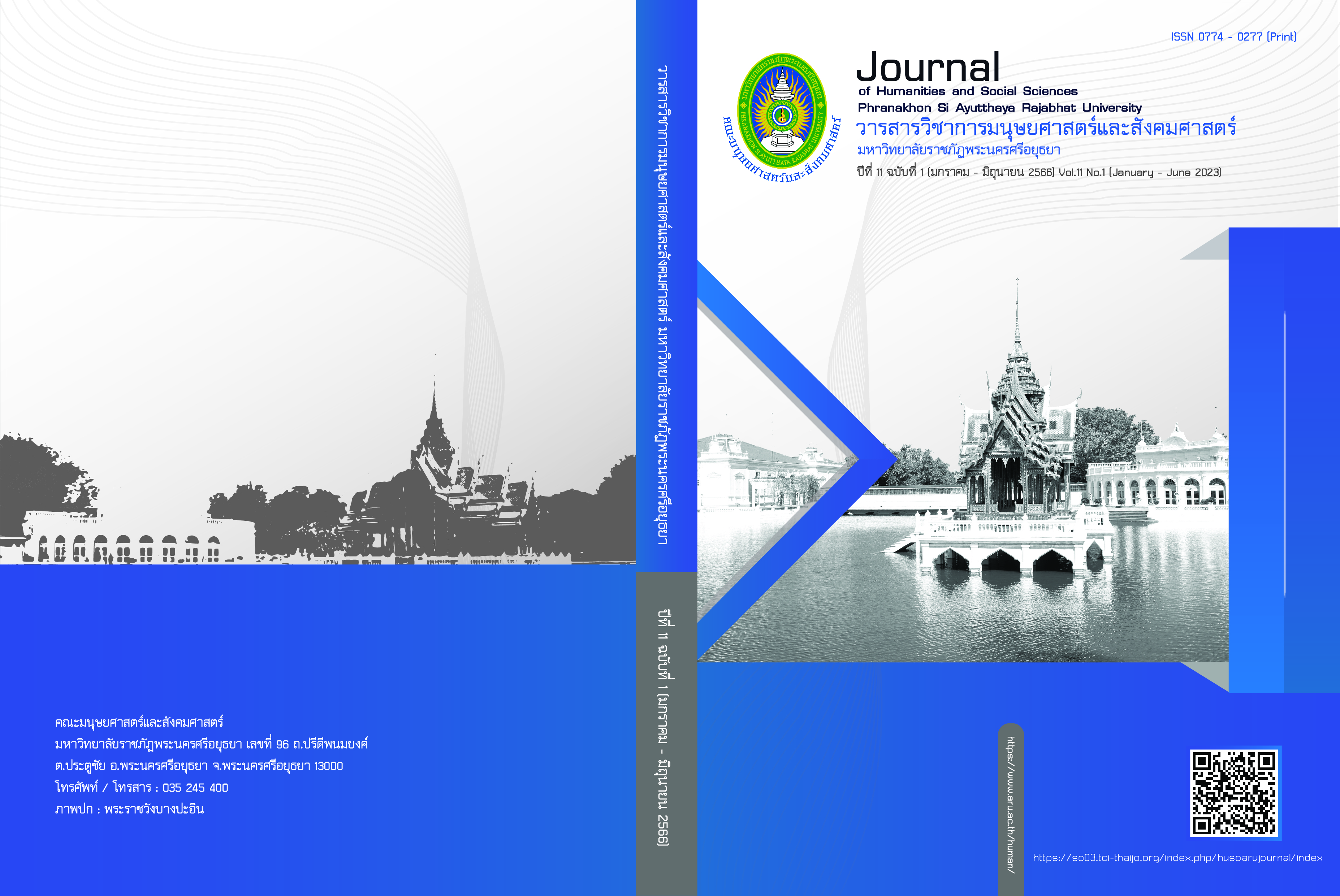เครือข่ายนโยบายสาธารณะ: ความหมาย การวิเคราะห์เครือข่ายและกรณีศึกษา
Main Article Content
บทคัดย่อ
บทความวิชาการนี้มีวัตถุประสงค์เพื่ออธิบายความหมายของเครือข่ายการวิเคราะห์เครือข่ายและกรณีศึกษาเพื่อให้เห็นถึงความเชื่อมโยงของการวิเคราะห์เครือข่ายกับการบริหารเครือข่าย ผลการวิเคราะห์ พบว่า 1) เครือข่ายเป็นรูปแบบการประสานงานของบุคคล กลุ่ม หรือองค์การหลาย ๆ องค์การที่ต่างฝ่ายต่างมีทรัพยากร มีเป้าหมาย และมีวิธีการทำงาน 2) ผลการวิเคราะห์เครือข่ายนโยบายสาธารณะกับกรณีศึกษาจำนวน 3 กรณี ได้แก่ เครือข่ายสลัมสี่ภาค เครือข่ายดอนฉิมพลีโมเดล และเครือข่ายทางสังคมของแรงงานสตรีลาวย้ายถิ่น พบว่า ทั้ง 3 กรณีศึกษามีขนาดของกลุ่มสังคมพิจารณาได้จากจำนวนสมาชิกและมีการติดต่อสื่อสารในประเด็นทางนโยบายสาธารณะร่วมกัน มีการจัดรูปแบบความสัมพันธ์เชิงโครงสร้างของการทำงานระหว่างสมาชิกในเครือข่าย มุ่งเน้นการมีส่วนร่วมและมีอำนาจเท่าเทียมกันในกระบวนการ มีการกำหนดกรอบการทำงานร่วมกัน ดังนั้นเพื่อให้การบริหารเครือข่ายประสบความสำเร็จ ควรนำรูปแบบการบริหารแบบหุ้นส่วนร่วมกันระหว่างรัฐบาลและเอกชนเข้ามาใช้
Article Details

อนุญาตภายใต้เงื่อนไข Creative Commons Attribution-NonCommercial-NoDerivatives 4.0 International License.
บทความที่ได้รับการตีพิมพ์เป็นลิขสิทธิ์ของ คณะมนุษยศาสตร์และสังคมศาสตร์ มหาวิทยาลัยราชภัฏพระนครศรีอยุธยา
ทัศนะและความคิดเห็นที่ปรากฏในบทความในวารสารฯ ถือเป็นความรับผิดชอบของผู้เขียนบทความ และไม่ได้เป็นทัศนะและความรับผิดชอบของ กองบรรณาธิการ หรือ ของ มหาวิทยาลัยราชภัฏพระนครศรีอยุธยา
เอกสารอ้างอิง
กาญจนา แก้วเทพ. (2538). การพัฒนาแนววัฒนธรรมชุมชนโดยถือมนุษย์เป็นศูนย์กลาง. กรุงเทพฯ: สามัคคีสาส์น.
จันทะลา วรรณหงส์ และธนพฤกษ์ ชามะรัตน์. (2561). เครือข่ายทางสังคมของแรงงานสตรีลาวย้ายถิ่นในจังหวัดอุดรธานี ประเทศไทย. วารสารราชภัฏสุราษฎร์ธานี, 5(2), 127-148.
ชนกาญจน์ พันธุ์เดิมวงศ์. (2559). กระบวนการและการมีส่วนร่วมในการขับเคลื่อนนโยบายสาธารณะด้านที่อยู่อาศัยของเครือข่ายสลัมสี่ภาค. วารสารวิจัยสังคม, 39(1), 73-108.
นฤมล นิราทร. (2543). การสร้างเครือข่ายการทำงาน: ข้อควรพิจารณาบางประการ. กรุงเทพฯ: สำนักพิมพ์มหาวิทยาลัยธรรมศาสตร์.
นันธิดา จันทร์ศิริ. (2557-2558). การจัดการเครือข่ายในกระบวนการนโยบายสาธารณะ. สารอาศรมวัฒนธรรมวลัยลักษณ์, 15(1), 145-153.
พัชรี สิโรรส. (2539). คำบรรยายวิชานโยบายสาธารณะและการวิเคราะห์นโยบาย. กรุงเทพฯ: มหาวิทยาลัยศรีปทุม.
เพิ่มศักดิ์ จะเรียมพันธ์. (2555). การเมืองของกระบวนการกำหนดนโยบายโฉนดชุมชน. วิทยานิพนธ์ปริญญามหาบัณฑิต, จุฬาลงกรณ์มหาวิทยาลัย.
วีระศักดิ์ เครือเทพ. (2550). เครือข่าย: นวัตกรรมการทำงานขององค์กรปกครองส่วนท้องถิ่น. กรุงเทพฯ: สำนักงานกองทุนสนับสนุนการวิจัย.
หทัยทิพย์ นราแหวว และทวิดา กมลเวชช. (2561). การบริหารจัดการอุทกภัย กรณีศึกษาเปรียบเทียบ: เทศบาลนครปากเกร็ด จังหวัดนนทบุรี เทศบาลนครหาดใหญ่ จังหวัดสงขลา และตำบลดอนฉิมพลี จังหวัดฉะเชิงเทรา. วารสารผู้ตรวจการแผ่นดิน, 11(2), 35-82.
Alter, C., & Hage, J. (1993). Organizations working together. California: Sage.
Bevir, M., & Richards, D. (2009). Decentring policy networks: A theoretical agenda. Public Administration, 87(1), 3-14.
Butts, C. T. (2008). Social network analysis: A methodological introduction. Asian Journal of Social Psychology, 11, 13-41.
Dempwolf, C. S., & Lyles, L. W. (2012). The uses of social network analysis in planning: A review of the literature. Journal of Planning Literature, 27(1), 3-21.
Goldsmith, S., & Eggers, W. D. (2004). Governing by network: The new shape of the public sector. Washington, DC.: Brookings Institution Press.
Goodsell, C. T. (2006). A new vision for public administration. Public Administration Review, 66(4), 623-635.
Jensantikul, N. (2021). Concept and elements of a network model for effective management. In Proceedings of 16th International Conference on Humanities and Social Sciences 2021 (IC-HUSO 2021) 18th-19th November 2021, Faculty of Humanities and Social Sciences (pp.285-294). Khon Kaen: Khon Kaen University.
Joanna, S., & Wohlstetter, P. (2006). Understanding the different faces of partnering: A typology of public-private partnerships. School Leadership and Management, 26(3), 249-268.
Macdonald, R. (2012). Pinning down the moving target: The nature of public-private relationships. Public Performance & Management Review, 35(4), 578-594.
McEntire D. A., Fuller, C., Johnston, C. W., & Weber, R. (2002). A comparison of disaster paradigms: The search for a holistic policy guide. Public Administration Review, 62(3), 267-281.
McGuire, M. (2006). Collaborative public management: Assessing what we know and how we know it. Public Administration Review, 66 (Special issue), 33-43.
Parag, Y. (2006). A system perspective for policy analysis and understanding: The policy process networks. The Systemist, 28(2), 212-224.
Provan, K. G., & Milward, H. B. (2001). Do networks really work?: A framework for evaluating public sector organization network. Public Administration Review, 61(4), 414-423.
Reid, N., & Smith, B. W. (2009). Social network analysis. Economic Development Journal, 8(3), 48-55.
Rhodes, R. A. W., & Marsh, D. (1992). Policy networks in British politics: A critique of existing approaches. London: Oxford University Press.
Sandström, A., & Carlsson, L. (2008). The performance of policy networks: The relation between network structure and network performance. The Policy Studies Journal, 36(4), 497-524.
Simo, G., & Bies, A. L. (2007). The role of nonprofits in disaster response: An expanded model of cross-sector collaboration. Public Administration Review, 67, 125-142.
Smith, J., & Wohlstetter, P. (2006). Understanding the different faces of partnering: A typology of public-private partnerships. School Leadership & Management, 26, 249-268.
Starkey, P. (1997). Network for development. London, UK: International Forum for Rural Transport and Development.
Stone, D. (2008). Global public policy, transnational policy communities, and their networks. Policy Studies Journal, 36(1), 19-38.
Tumornsunthorn, N.S., Empradit, N., & Sangkhawan, D. (1998). A study on social factors affecting AIDS patients. Bangkok: Research Report for Committee on Social Issues Research, National Council on Social Welfare of Thailand under Royal Patronage.
Wasserman, S., & Faust, K. (1994). Social network analysis: Methods and applications. Cambridge: Cambridge University Press.
Zaharioaie, M. (2012). The utility of using public-private partnership for local governments. Journal of Public Administration, Finance and Law, 2, 17-24.


